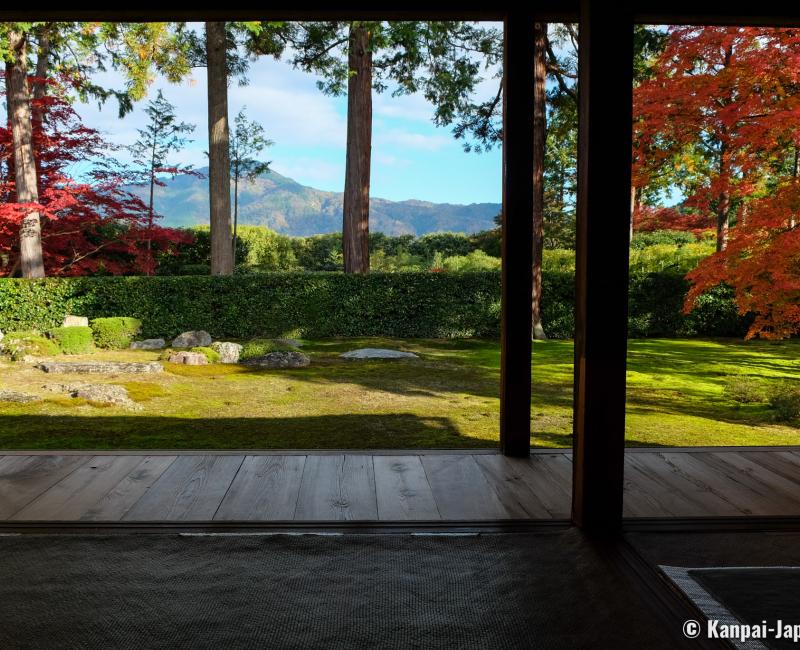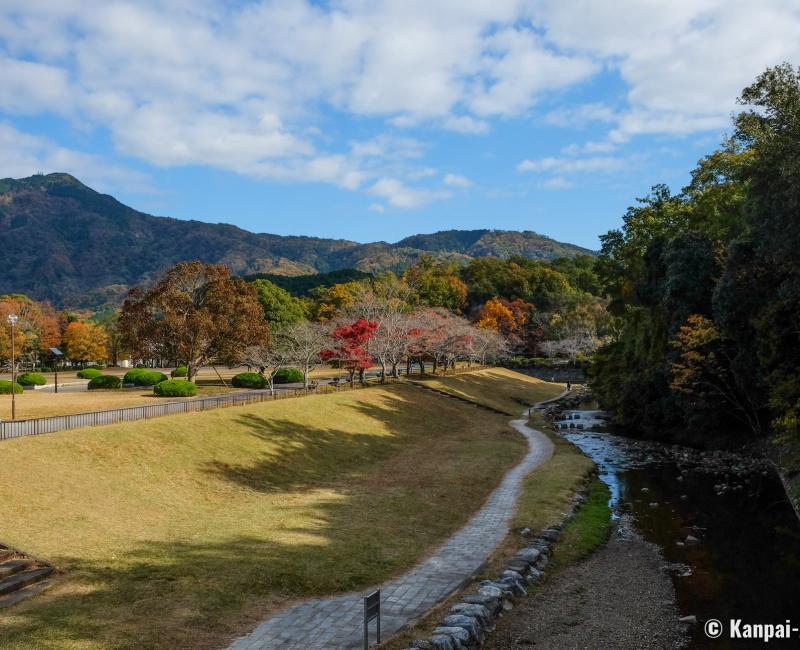Entsu-ji
The Shakkei Garden Borrowing Mount Hiei in Kyoto
Entsu-ji is a temple of the Myoshin-ji school of the Japanese Rinzai Zen Buddhism, located north of Kyoto. Lost in a residential neighborhood and hard to reach, it is home to a beautiful little dry garden incorporating the landscape up to the sacred Mount Hiei-zan a few kilometers away. Visiting is particularly recommended in autumn, when the maple trees’ foliage change color.
Entsu-ji temple was initially a villa erected by emperor Go-Mizunoo in the 17th century and named "Hataeda Palace." A Zen Buddhism enthusiast, the emperor had been searching for this ideal practice place for more than ten years. In the same ward, he also had the vast imperial estate Shugaku-in Villa constructed at the foot of the Mounts Higashiyama.
In 1678, the site was converted in a temple by nun Enkoinbunei, who was a former attendant of the Emperor’s mother. The tenth head-priest of Myoshin-ji temple complex, associated to the Rinzai sect of Zen Buddhism, was then appointed Entsu-ji’s first head-priest.

A remarkable imperial heritage
A narrow, paved alley starts at the entrance, lined with vegetation and a beautiful bell. Then, removing shoes is required before entering the main building. One can walk serenely in a corridor defined by nice sudare bamboo stores filtering the sunlight. The two gems of Entsu-ji are quickly reached :
- A kakemono of Emperor Reigen, Go-Mizunoo’s son; and,
- The dry garden made of forty rocks amidst moss beds.
The garden was designated a "National Place of Scenic Beauty" and Kyoto City is particularly vigilant in the protection of the wonderful view. Entsu-ji’s garden is indeed a marvelous example of a "borrowed landscape" or shakkei (借景), incorporating Mount Hiei in the background so as it actually looks like a part of the garden.
The view is particularly stunning in autumn 🍁, when the maple trees’ foliage reddens. The indoors are moreover fitted with heating mats for visitors to enjoy the view without getting cold. The garden, was designed by Emperor Go-Mizunoo himself, is composed of:
- Rocks and moss beds in the foreground, with Japanese maple trees on each side,
- A row of tall cedar trees and camellias, with more than fifty varieties; and,
- In the background, small trees, bamboos and Mount Hiei as the scenery's canvas.
The visit continues in another small green space, passes by a wonderful statue of Kannon, the deity of peace and mercy.
Noteworthy information: pictures are only allowed on the garden side. Taking photos with a camera 📷 or a smartphone 📱 is forbidden inside the main hall Hondo.

A small Kyoto Zen temple unspoiled by the crowd
Going to Entsu-ji is a journey by itself as the temple is located away from sightseeing circuits and harder to reach by public transportation. From the station, it nonetheless offers a nice and quiet half an hour walk in a typical residential area of Kyoto. On a fine weather day, the excursion is worth extending with a detour to Lake Takaragaike’s Park, surrounded by Mounts Matsugasaki that are illuminated during Kyoto’s bonfire festival in August.
While pictures are prohibited on the largest part of the visit and the buildings are of a modest size, it is precisely this minimalism and restrictions that help preserving Entsu-ji from mass tourism and keeping its beauty. It offers a spiritual halt before a wonderful shakkei dry garden. On a weekday, chances are high that visitors enjoy an absolute quietness, except for the monks’ recorded explanations that are played occasionally.



